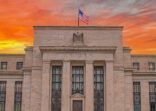AllianceBernstein noted in a research note this week that while keeping policy rates near to zero helps stimulate the economy by encouraging investors to take more risk, it has led to complacency – as shown by less volatility in the recent years.
“As we move into the direction of less accommodation, any number of risks could serve as catalysts for higher levels of volatility. On the other hand, an increase in US interest rates could actually help calm investors, by signaling that the Federal Reserve believes that the US economy is strong enough to absorb such a move,” AllianceBernstein said.
Principal Global Investors holds a similar view. In a statement last week, Principal said that while Fed Chair Janet Yellen is clearly in the 2015 liftoff camp, her reluctance to act in September “leaves investors wondering what disaster the Fed sees that they don’t”.
“The US expansion is in its seventh year and the labour market has little slack left. The unemployment rate at 51% is the lowest since April 2008, off 0.2% from the prior month,” Principal noted.
“Job openings are rising at a faster rate than hires, suggesting a mismatch of skill sets. Wages are rising in response to tighter labour markets,” Principal added.
Blackrock noted in its global fixed income report this week that the US has been through “three impressive years” of job growth – an average of 221,000 jobs were created each month.
“Without question, the global economy, the financial markets, and liquidity in the financial system were all more stable and supportive of a policy change many months ago, when we were urging the Fed to act,” Blackrock said.
Commenting on the Fed’s decision to keep interest rates unchanged in September, Blackrock said: “The risks of policy inaction are serious [considering] the leverage that has been built as a result of interest rates being too low for so long.”
Blackrock noted that such an “emergency” policy rate – of near zero – presents “meager benefits” in today’s context.
















